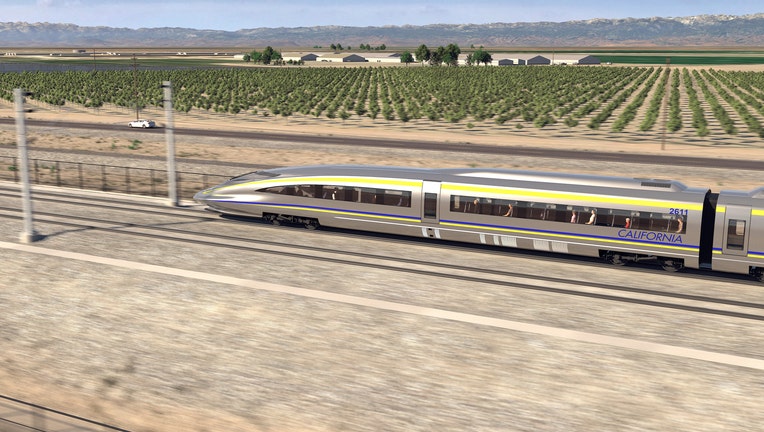Newsom allocates climate funds toward high-speed rail

California High Speed Rail rendering.
SACRAMENTO, Calif. - Gov. Gavin Newsom's state budget, released last week, drew criticism for proposed cuts to several services, including state-funded healthcare and Planned Parenthood.
His revised budget did allocate funds for one of California's most troubled projects: high-speed rail.
The governor's new plan would earmark at least $1 billion a year through 2045, to go toward constructing a bullet train to connect Los Angeles and San Francisco. That money would be drawn from the state's cap-and-trade program, which is funded by credits bought and sold by major polluters.
Over the last 11 years, almost $13 billion from cap and trade auctions has been spent on electric vehicles, public transit, clean energy and other projects to reduce greenhouse gases and adapt to climate change, CalMatters reported.
The road thus far
The backstory:
The high-speed rail has been hotly contested since it was first approved in 2008, when voters approved a $9.95 bond measure to construct the 800-mile network. The planned 220-mile-per-hour train would connect Los Angeles to San Francisco via the Central Valley, and was slated to be completed in 2020. At the time, the entire project was sold as costing around $33 billion.
Since then, there have been multiple lawsuits over land acquisitions, lengthy environmental reviews and fights over funding, all of which have delayed construction and added to the cost of the project. Current projections show the total cost is estimated at $128 billion.
A project update released earlier this year showed the 171-mile "initial operating segment" from Merced to Bakersfield will launch no sooner than 2030, though it could take until 2033 to be completed. That section alone is estimated to cost taxpayers $35.3 billion, though projected budget shortfalls show that it might require an additional $10.2 billion.
Contentious relationship
Big picture view:
The project could be further delayed by the withdrawal of federal funds, which are key to its completion. President Trump said earlier this month that the federal government will not pay for the project.
The announcement was not entirely unexpected. The President, during his first term, pulled nearly $1 billion in funding from the project, a decision that prompted a lawsuit. The funds were later returned through a settlement with the Biden Administration in 2021.
Trump has also taken aim at the cap and trade program in an executive order that targeted climate initiatives. That order singled out the California program as forcing businesses to meet "radical requirements."
Other focus
By the numbers:
In addition to the high-speed rail, Newsom is proposing using $1.54 billion of the 2025-2026 climate funds, and more in later years, to pay for Cal Fire's "fire prevention, fire control and resource management activities." That money would be more than a third of Cal Fire's $4.47 billion budget.
The paired focus of Cal Fire and high-speed rail has already drawn criticism about the use of climate funds, and cutting other priorities.
"You're going to have some tough choices," Helen Kerstein, who tracks the cap and trade program for the nonpartisan Legislative Analyst's Office said. "You can't add $1.5 billion — and growing — and not take anything away, at least in the near term, given current projects."

